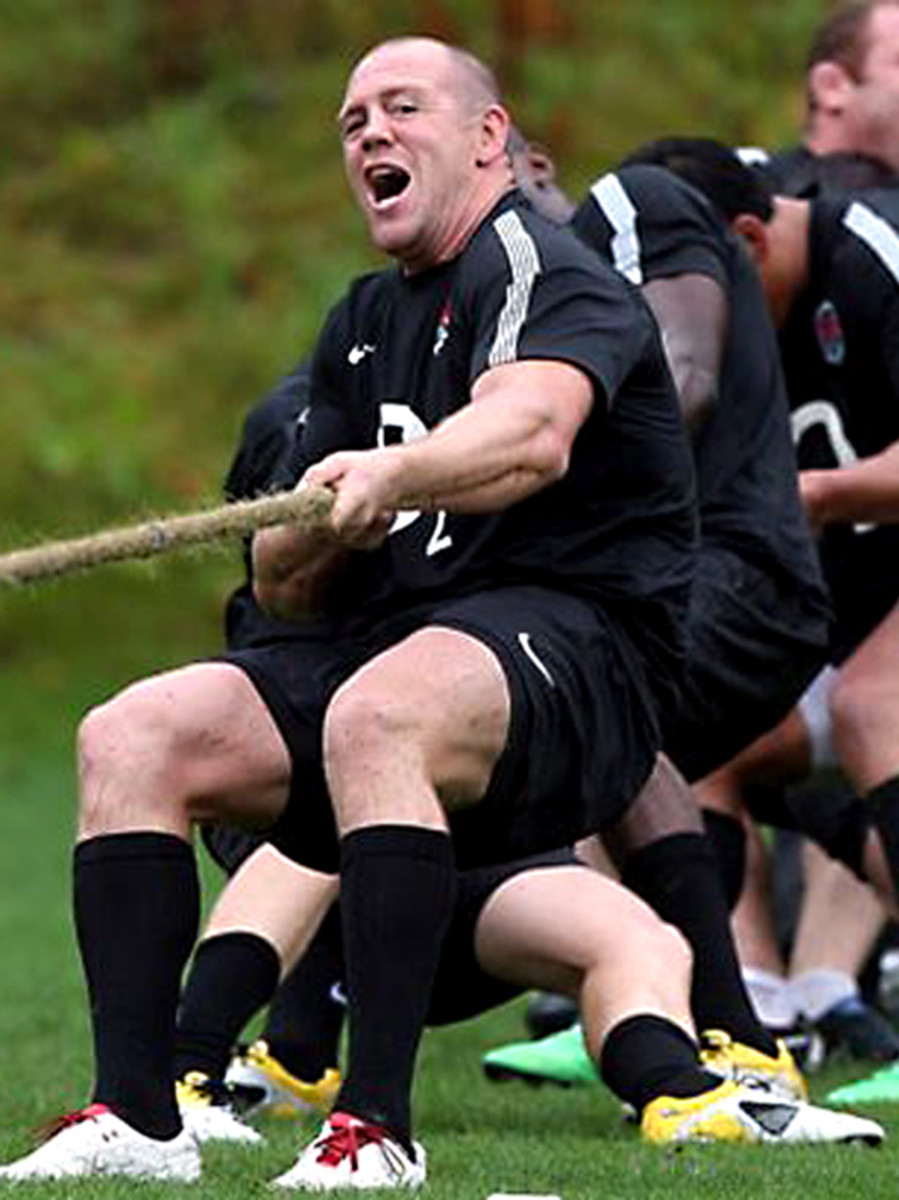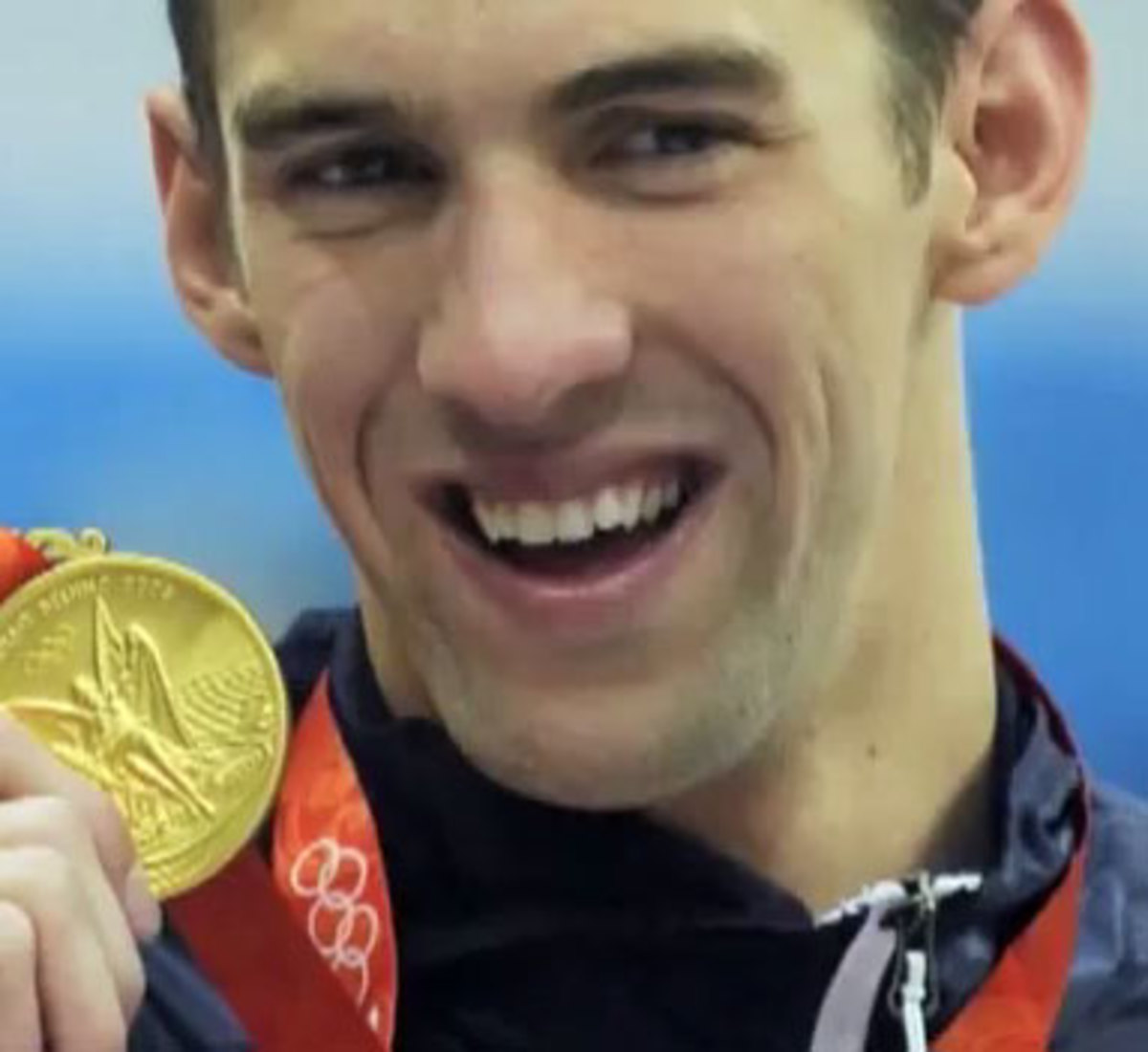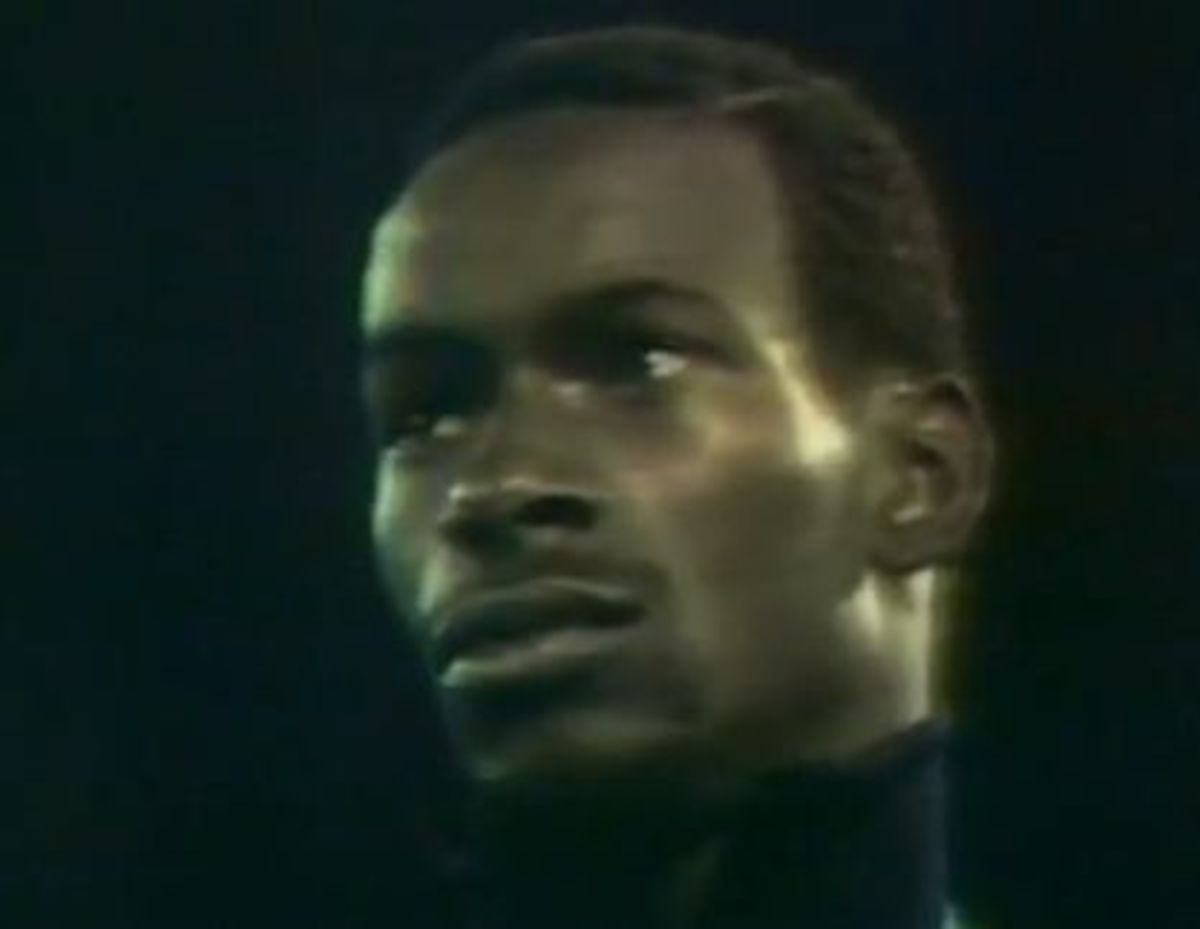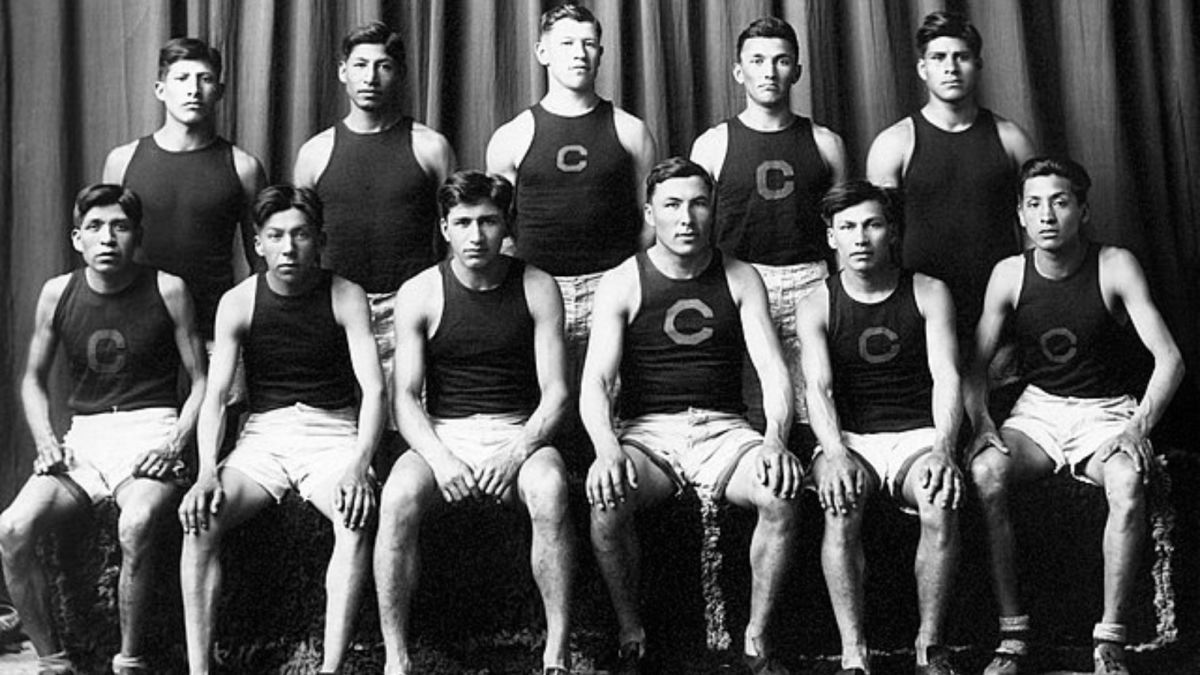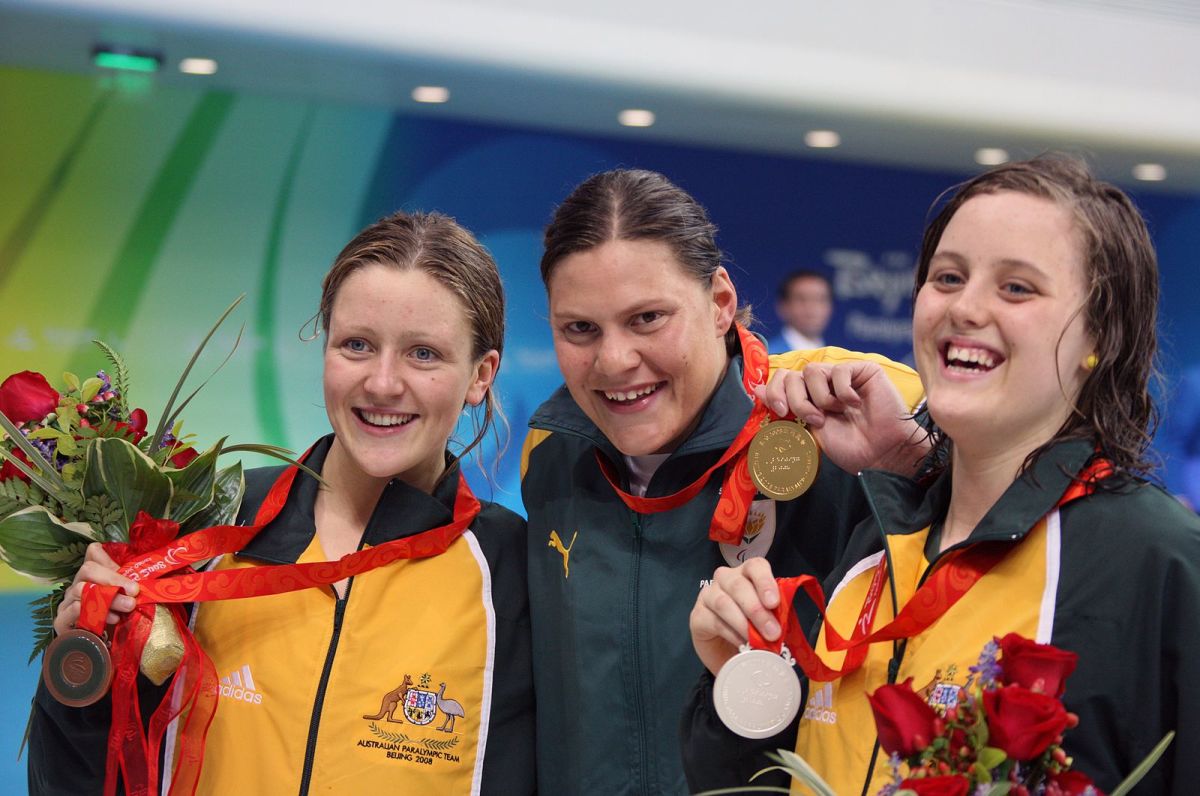Filbert Bayi: Tanzania's Most Distinguished Athlete and the Countdown to the World Records
INTRODUCTION
Legendary Kenyan athlete Hezekiah Kipchoge "Kip" Keino had in October 1968 under searing temperatures in the high-humidity and high-altitude Mexico City, and against medical advice because of his stomach ailments and weakness, won the Olympic gold medal in the 1500 meters (establishing a new Olympic record of 3min. 34.91sec.). Kip Keino even managed to bag the silver medal in the 5000 meters, finishing behind legendary Tunisian Mohamed Gammoudi, and ahead of the third Naftali Temu who had won the very first ever Olympic gold for Kenya by earlier winning in the 10000 meters. Keino had collapsed from weakness while competing in the 10000 meters, but would rise up and congratulate and hug his young team-mate at the finishing line.
A versatile, enthusiastic, patriotic, and determined middle- and long-distance runner, Kip Keino now in Munich in the summer of 1972 was now a 32 year-old veteran and an Olympian for a third consecutive time. But Keino, amidst the youthful competition, defied his age. In Mexico City, in 1968, only two of the 52 other competitors in the 1500m had been older than the then 28 year-old Keino. In Munich at age 32, Keino was very much the elderly statesman in the 1500m line-up. Furthermore, the astonishing Keino had only four months earlier started to embrace the 3000m steeplechase. And he did qualify in the steeplechase to compete for Kenya! Keino had taken the steeplechase seriously after he had found that the Olympic schedule would not allow him to compete in both the 1500m and the 5000m.
Compared to glorious Keino, a very unknown commodity in the person of Filbert Sanka Bayi was in Munich to represent another east African country--Tanzania. Keino was undoubtedly one of Bayi's foremost idols and inspirations. Keino remains the most immortal name among African track athletes!
Filbert Bayi, an athlete with an "afro-hairstyle" and boyish looks, had grown up near Arusha on a farm in Karutu within sight of Mount Kilimanjaro. Bayi left school at age 17 and migrated to the capital Dar-es-Salaam. Bayi's early running training was relatively crude. In the crowded, high-humidity capital, Bayi would pick out and sprint alongside a moving bus and rest when the bus was loading and unloading passengers---some form of interval training. In 1971 Bayi achieved a reasonably good personal best of 3min 52 seconds in the 1500m.
THE YEAR 1972
It was earlier in 1972, Bayi's personal bests and national wins in the 1500m (3:45) and steeplechase (8:55) qualified him to represent Tanzania at the Olympic Games in Munich.
In Munich, Filbert Bayi, a tall 19 year-old lightweight, a Tanzania airforce technician just so happened to be scheduled to compete in the same two events that Kip Keino was enrolled: the 1500m and the 3000m steeplechase. And while Keino was the elder, Filbert Bayi was one of two 19 year-olds that were youngest of the steeplechase competitors. There would only be four heats, and the top three finishers in each round would advance to the finals. The heats took place on September 1, 1972. Bayi was drawn in Heat One, the same heat that included Keino. Tapio Kantanen of Finland won (with an Olympic Record of 8:24.8), Keino was second, and the third finals' qualifier was Takaharu Koyama of Japan. Bayi was ninth with a time of 8:41.4 (a Tanzania national record) and therefore was out of the competition. Heat Two witnessed Kenya's legendary Benjamin Jipcho win; in Heat Three another Finn Pekka Paivarinta won. The Fourth Heat was won by another Kenyan legend Amos Biwott who had won the steeplechase Olympic gold four years earlier. Biwott's finish in 8:23.73 broke the Olympic record that had been established three heats ago! Notably, Biwott's steeplechase win in 1968 would be the beginning of the consecutive dominance of the steeplechase by Kenyans at the Olympics (apart from the 1976 and 1980 Games which Kenya boycotted) that has yet to be shattered!
The finals of the steeplechase were held on September 7th, 1972. Kip Keino would win in a new Olympic record of 8:23.64, followed by Benjamin "Ben" Wabura Jipcho (8:24.62), and the bronze was won by Tapio Kantanen (8:24.66). Amos Biwott came in sixth in a time of 8:33.48.
As for the 1500m, seven heats were established for Round One to take place on September 8th. The fastest four of each heat (plus two wild cards) would advance to the semi-finals. Filbert Bayi was eliminated when in Heat Two he finished sixth out of 8 competitors. But commendably, Bayi had again established another new national record--3:45.4. Keino won in Heat Four and was followed by Rod Dixon of New Zealand. Heat Six was won by Pekka Vasala of Finland; and Heat Seven was won by another Kenyan legend Mike Boit. The semi-finals were held on September 9th. Mike Boit, Keino, and Rod Dixon won in the three Heats. Ten that including big names in the competition such as Pekka Vasala and Brendan Foster (GBR) were set for the 1500m finals showdown. On September 10, Keino worked to psychologically wear down the competition, but in the final stretch of the 1500m he was outsprinted by 24 year-old Pekka Vasala (3:36.33) of Finland and settled for the silver (3:36.81). This was regarded by many as an upset. Rod Dixon of New Zealand claimed the bronze, Mike Boit was fourth, and Brendan Foster was fifth. What would become of Filbert Bayi?
The annual East and Central African Championships were next held in Dar-es-Salaam in Tanzania, comfortably Bayi's territory. Bayi was not disappointing. On December 3rd, 1972, only 3 months after the Olympics, Bayi became a regional champion in the 1500m. He won in an impressive time of 3:38.9, not only a national record but a shaving off of more than 5 seconds from the national record he had established less than three months earlier at the Olympics. Two Kenyans Wilson Waigwa and D. Mungai won the silver and bronze, respectively. Bayi was fast gaining the confidence to face even more formidable competition.
THE YEAR 1973
Bayi would compete again with Keino at the second All-Africa Games which were held in Lagos in Nigeria in January 1973. It would be interesting. On January 11th in a 1500m heat that included both runners, a slow and relaxed run witnessed Bayi take second place in 3:48.32, following Olympian Shibrou Regassa (Ethiopia), then Kip Keino jogging in third. Keino was quick to say that he had relaxed and simply wanted to make it to the finals. Keino assured the public that the finals would be very different from what had happened in the Heat. But perhaps all those years of running and victory had exacted a toll on the aging veteran. On January 13th, Filbert Bayi taking the lead from the start, beat Keino, winning in the finals in a commendable time of 3:37.18, yet another Tanzania national record. Shibrou Regassa was third. Notably, Bayi had suffered a bout of malaria just before the Games. Henceforth Africans and the rest of the world started to take a second serious look at this new Tanzanian phenomenon that had emerged from nowhere. Kipchoge Keino would retire from competitive sports in 1974 as an ITA (International Track Association) professional, but he was impressed by Bayi to whom he offered congratulations and encouraging words.
A string of wins in international competition, followed in 1973. In Paris, near the end of May, Bayi won in the 1000m and established an Africa record of 2:19.5. Then in Boras in Sweden in early June, Bayi won the 1500m in a relaxed 3:45.5. The next day in Strangnas also in Sweden, Bayi won in the 1500m in 3:44.6. Again in Sweden, this time in Stockholm, Bayi won in quite a fast 3:37.9 on June 12th.
Then on the June 14th, Bayi changed gears and went for the 800m in Potsdam in the German Democratic Republic (GDR). Bayi was beaten by 2-time Olympian Dieter Fromm (GDR) into second place, but Bayi managed to establish a Tanzania record of 1:46.9.
A week later on June 21st, at the Kusocinski Memorial Meet held in Warsaw in Poland, Bayi won in the 1500m, finishing in 3:37.9. He then flew to Denmark to participate in the Aarhus Games. Here Bayi won the 1500m in 3:35.6, a new Tanzania record! Bayi was moving up fast and furiously! Danish Olympian Tom Hansen was second, and Olympian Rolf Gysin of Switzerland was third.
Only four days later, on June 28th at the World Games held in Helsinki in 1973, Bayi won the 1500m in what would be the world best time in the 1500m--3:34.6--yet another Tanzania record. This race was significant in that it included many notable international athletes that included Kenyans Mike Boit and Ben Jipcho, and Americans Steve Prefontaine and Dave Wottle, among others. Bayi would display to the world his signature way of running---take the lead with a fast pace right from the starting of the race!. Bayi had ran a blistering 53.6 in the first 400m, 1:51.6 at the 800m mark, and 2:52.2 at the 1200m mark! David Wottle (800m Olympic gold medallist) was second (3:36.2), and Ben Jipcho (Olympic silver medallist) was third (3:36.6).
The very next day, June 29th, this time in a track meet in Vasteras in Sweden, Bayi was again the victor in the 1500m, winning in 3:40.7.
Again in Sweden, this time at a meet in Stockholm, but this time running the slightly longer one mile, Bayi was challenged by an impressive field that included Jipcho and Emiel Puttemans. It was July 2nd, 1973. This time, Ben Jipcho won, beating Bayi into second place. But Bayi did establish a Tanzania mile record of 3:52.86. At hand to watch the much anticipated battle between 20 year-old Bayi and 30 year-old Jipcho for a possible world record in the mile, were 18120 spectators in Stockholm's Olympic Stadium. Near the end of the race, the leading Bayi started to tire and Jipcho (who had been 10 yards behind) passed Bayi about 75 yards before the finishing line. Jipcho, encouraged by a standing cheering audience, had established the fastest mile in Europe in 3:52.0, one of the three fastest times ever recorded in the world, and a new Kenya and African record. Bayi had set quite a trying pace: 400m--52.5, 800m--1:51.1, and 1200m-2:52.2.
Only three days later, July 5th at the Oslo International, Bayi true to form, beat an impressive field. He won in the 1500m in an impressive 3:37.6. On the 19th of July, Bayi was in Tunis to compete in the African Youth Festival Championships. Bayi won in the 1500m in 3:45.3. Second place was captured by Suleiman Nyambui, another Tanzanian who is only a couple of months older than Bayi. Nyambui would continue to be one of Bayi's track rivals and he would gradually become a national sports icon. On July 24th at the Bislett Games held in Oslo, this time in the 800m, Bayi was beaten into second place by 20 year-old John George Walker of New Zealand--another of Bayi's more enduring historical track rivals! Walker won in 1:46.3. Still, Bayi's time of 1:46.7 was a new Tanzania record.
The next day, July 25th, Bayi was at a track meet in Stockholm. He won in the 1500m, finishing in a good time of 3:38.46. Soon afterwards, on August 4th, Filbert Bayi was ready to run the 1500m at the Africa vs. USA Meet that was taking place in Dakar in Senegal. This time Bayi was beaten into second place by his older and more experienced rival Ben Jipcho. But Bayi's time of 3:37.85 was impressive. Twelve days later, at the Latin America vs. Africa Meet held in Guadalajara in Mexico on August 16th, Bayi achieved first place in the 1500m in a time of 3:40.6. There followed a relatively long interval, until Bayi competed in Nairobi. In the 1500m, Bayi started off very fast, 52.0 in the first 400m, 1:52.0 at the 800m mark. But the abysmally high pace likely cost Bayi the race. He was beaten into second place by another Kenyan legend John Kipkurgat. The then 29 year-old Kipkurgat is mostly renowned for having competed in the 800m.
THE YEAR 1974
Nearly exactly a year after Bayi, in beating Kip Keino, had won in the 1500m in Lagos at the All-Africa Games, the very busy athlete was ready to meet the impressive middle-distance line-up at the Commonwealth of Nations Games held in Christchurch in New Zealand. Bayi would compete in the 800m followed by the 1500m.
On January 19th of 1974, about a week prior to the Commonwealth Games, Filbert Bayi was beaten into second place in the 800m by Kenyan Olympic bronze medallist Mike Boit. Nevertheless, Bayi was impressive in his setting of a new Tanzania record--1:46.0.
In Heat One of the actual Commonwealth Games, Bayi won in the 800m in 1:47.09. This was on January 27th 1974. The winners of the other three heats, respectively, were familiar middle distance giants: John Kipkurgat, John Walker, and Mike Boit. The top four finishers of each heat would be placed among the two semi-final rounds to be held later in the day. Bayi was placed in the second semi-final. In Semi-Final One, the top four finishers were advanced to the finals and they were John Kipkurgat, Andy Carter (England), Daniel Omwanza (Kenya), and Phil Lewis (Wales). Semi-Final Two witnessed Bayi (1:46.56) advance to the finals although he was beaten into fourth place, perhaps him relaxing and simply contented with qualifying for the final round. Mike Boit won in this semi-final, followed by John Walker, then John Hooker (Australia).
In the finals, ran on January 29th, John Kipkurgat of Kenya won impressively in 1:43.91 (a new Africa Record), followed by Mike Boit (1:44.39), and then John Walker (1:44.92). Filbert Bayi was fourth in 1:45.32, nevertheless yet a new Tanzania record! At the 400m mark, Bayi had made a spirited effort to keep up with the tall lanky Kenyans, but they were too fast and too smooth, and Walker would eventually overtake Bayi. Apparently, Bayi was never a strong sprinter so, it benefited him to lead widely from the beginning given his stamina and consistency.
The heats of Bayi's main specialization, at the Commonwealth Games, the 1500m, would take place on January 31st. There were three heats, Bayi was placed in Heat 2, and the top four finishers of each heat would move on to the finals. Heat One involved Mike Boit (3:44.61) winning, followed by Australian Graham Crouch (3:44.64) , then New Zealander Rod Dixon (1:44.64), then fourth was Englishman Brendan Foster (3:44.89). The second heat would turn out to be by far the fastest of the heats. Here the top four were Filbert Bayi (3:38.18), John Kirkbride of England (3:39.79), David Fitzsimons of Australia (3:39.92), and Tony Polhill (NZL) in 3:40.30. The final tally of the first four finishers in Heat 3 was John Walker (3:42.52), Bayi's fellow-countryman Suleiman Nyambui (3:42.57), Australian Randal Markey (3:42.77). Ben Jipcho, probably relaxed and simply contented with advancing to the finals and saving his energy for the ultimate run, was fourth (3:43.55).
The 1974 finals of the 1500m, at the Commonwealth Games, will loom in the minds of many track enthusiasts for a very long time. On February 2nd Bayi would ran his most iconic race, taking the lead from the beginning. The timing at the 400m mark was 54.4, 1:51.8 at the 800m mark, and 2:50.4 at the 1200m mark. Bayi established a new world record of 3:32.16, only 15 months after he had competed and emerged as a mediocre unknown at the Olympics in Munich. But given Bayi's incredible progress over the course of a year, Bayi had been predicted by many to break the world record. The runners-up also achieved phenomenal and leading world times--John Walker (New Zealand national record)---3:32.52; Ben Jipcho (Kenya national record)---3:33.16; and Rodney Dixon (New Zealand)--3:33.89. Graham Crouch was fifth (3:34.22), Mike Boit was sixth (3:36.84), and Suleiman Nyambui (3:39.62) was eighth. Jipcho's signature spurt in the last three hundred meters did not manage to stave off the young energetic Walker who was chasing Bayi, and Walker did close up on Bayi in the fight for the gold. About taking the lead right from the start, Bayi would remark, "I got boxed in [at the Olympic Games of 1972 in Munich] and was never able to take the lead. ...So now I take the lead from the start" (in "Bayi Breaks Record in 1500 Meter Race," by AP in Rome News-Tribune , February 3,1974).
The employment of a fast rabbit in this race would likely have produced a faster world record. Also, in the race, the leading Bayi often looked behind at his competition--perhaps an indication that he had expected the other athletes to chase him faster than they had done, and for him to achieve a better time. Also, Bayi's fast previous semi-final may apparently mean that he had fewer energy reserves for the finals than did most of the other elite competitors. In the end Bayi was elated and jumped up and down as he jogged in front of the appreciating jubilant crowd after his world-record win. Bayi was used to winning, so it was the world record that was the more exciting. Filbert Bayi had erased the 1500m world record that had previously been held by legendary American James Ronald ("Jim") Ryun. Bayi had shattered the world record by nearly one second, and Walker had also finished below Ryun's previous record. Legendary Jipcho who finished slightly outside the previous record, had already won gold in both the steeplechase and the 5000m. His gallant endeavor to win an unprecedented Commonwealth Games triple gold became thwarted!
The previous 1500m world-record run on July 8th 1967, during the USA vs. British Commonwealth of Nations track meet in the Los Angeles Memorial Coliseum, mostly involved a memorable duel between Kip Keino and Ryun. The two exchanged the lead a couple of times in the fast pace, Ryun ran away from Keino near the end of the race and established a new world record of 3:33.1. The world record (3:35.6) established by Australian Herb Elliot on September 5th 1960 was no more. This was undoubtedly one of Ryun’s greatest running performances. Track and Field News reported that “after 220 yards of dawdling, a record seemed out of the question.” However, after 440 yards, which Ryun, in third place, passed in 60.9 seconds, Kip Keino took the lead and ran the next lap in 56 seconds (the fastest second lap ever run in the 1500m at that time). Ryun, just behind, passed the 880-yard mark in 1:57.0. At 1320 yards the two were side by side in 2:55.0. Ryun pulled away to finish in 3:33.1, a record that stood for seven years. With a last 440 yards of 53.9 and a last 880 yards of 1:51.3, Cordner Nelson of Track and Field News called it “the mightiest finishing drive ever seen,” and said of Ryun’s performance, “This was most certainly his greatest race.”
On June 5th 1974, in the Tanzania capital Dar-es-Salaam, Filbert Bayi won in the 800m during the national championships after a relatively long layoff from primary competition. The finishing time was a modest 1:49.7. Later on, on June 27th in Helsinki, at the Top Games, Bayi was for the first time beaten in the 1500m by main rival John Walker. The winning time margin was quite significant: Walker finished in 3:33.89 and Bayi was second (3:37:20). On just the next day, at the International Meet in Vasteras in Sweden, Bayi changed gears to the 800m and was able to win in 1:47.1, beating legendary Kenyan Olympic 800m finalist and 4x400m relay gold medallist and also 1970 Commonwealth of Nations 800m and 4x400m relay gold medallist Robert Ouko. Soon after, in Stockholm at the Dagens Nyheter Galan meet, Bayi won in the one mile in quite an impressive 3:54.10 on July 1st. The next day, in the same event, Bayi won in the 1500m, finishing in 3:43.16. Soon afterwards, on July 4th, Bayi was at the Bislett Games in Oslo. But, he uncharacteristically, probably from injury, did not finish in the 1500m. The winner was Tom-Birger Hansen (Denmark) who was tenth in the 1500m at the Olympics held in Munich; Olympic silver medallist Mike Boit of Kenya was fifth in this meet in Oslo.
THE YEAR 1975
After quite a long layoff from international competition, Bayi emerged in 1975 at the New Zealand Games right in Christchurch where he had set the world record. This time, on January 20th, Bayi competed in and won in the infrequent 3000m and won in 7:53.9. Four days later at the New Zealand Games in the same city, Bayi won in the 800m (1:45.49), beating second-placed John Walker (1:45.9) and even 800m Commonwealth Games gold medallist John Kipkurgat who was third. The finals of the 800m, at an International meet in Auckland on January 28th witnessed Walker winning (1:46.7) in the 800m, Bayi racing in second (1:47.3), and John Kipkurgat beaten into a disappointing third place. At the end of January, Bayi competed in the Milrose Games in New York, winning in the mile in his first indoor performance in 3:59.3.
Soon afterwards, on February 7th, Bayi competed in Los Angeles (Inglewood) at the Los Angeles Times (160y indoor) track meet. Here, in the mile, Bayi won in 3:59.6, and beat off John Walker who was second in 3:59.9. On February 15th, in San Diego at the Jack in the Box Invitational (160y indoor track), Bayi significantly improved on his personal best through winning in 3:56.4, again beating nemesis John Walker (3:56.9) who was second. February 21st witnessed Bayi winning in the 1500m at the Olympic Invitational in new York. His finishing time was 3:41.2, ahead of second-placed Irish future legendary indoor world-record holder Eamonn Coghlan. At the AAU Indoor Championships in New York, on February 28th, Bayi won in the mile in a moderate 4:02.1. Then on the 6th day of March, in Cinque Mulini in San Vittore Olona in Italy, Bayi won in an unconventional 9.5 km cross-country race, ahead of New Zealanders Euan Robertson and then John Walker in third place.
After three months, Bayi was back again in international competition, again in an Italian city Formia. At the Citta di Formia, on May 8th 1975, Bayi won in the infrequently ran 1000m with a delivery of a national record of 2:18.1. On May 10th, again in another Italy city Caserta, Bayi won in the 800m at an international meet. The competition was not strong, and the finishing time was relatively modest: 1:48.3. But it was one of the tune-ups for Bayi's next legendary run.
On May 17th 1975, Sergeant Filbert Bayi had traveled all the way to the capital Kingston of Jamaica to compete in the mile at the Martin Luther King International Freedom Games. The competition was quite formidable and it included Eamonn Coghlan and American legend Martin "Marty" Liquori. Bayi confidently stood in the inner lane at the start line and immediately took the lead when the gun went off. During the first 600 meters, Bayi ran away from the other athletes and maintained a considerable length of lead just before Liquori and Coghlan began zeroing down on him and attempted to overtake him. But this simply encouraged Bayi to run faster and wear them out. The rest of the runners were considerably far behind. At the 440 yard mark, Bayi was timed at 56.9, 1: 56.9 at 880 yards, 2:55.3 at 1320 yards, and an amazing 3:35.0 at 1500m. In this "Dream Mile" (or "Miracle Mile"), Filbert Bayi broke Jim Ryun's world record by establishing a time of 3:51.0. Bayi had shaved a tenth of a second off Jim Ryun's record set in June 1967 in Bakersfield in California at the National Amateur Athletic Union meet. The previous 1500m record that Bayi broke had also been held by Ryun. In the "Dream Mile," Marty Liquori of Philadelphia was second (3:52.1), followed by Eamonn Coghlan (3:53.3) then at Philadelphia's Villanova University.
When interviewed, Bayi would remark, "I run hard at the start because that way I don't have to run in a bunch. They have to catch me. ...When I run from the front I know what kind of strength I have. ..I didn't know if I was running a world record. ...All I was doing was trying to win (In Bayi New King of Milers; Williams Outsprints McTear," by AP in St. Petersburg Times , May 19, 1975).
On August 12th 1975, nearly only three months after Bayi had slightly shattered the mile world record, his main nemesis the 6' 1" tall and sizeable (185 pounds, about 50 pounds heavier than Bayi) 23 year-old New Zealander John Walker further lowered the record by an astounding 1.6 seconds! The new record became 3:49.4, the first ever timing below the 3:50, established at the Goteborg Games in Germany. Bayi was not among the competitors in this world-record run, but the margin of more than 5 seconds ahead of second placed Kenneth Hall of Australia was also significant. Walker had, this year lost three times to Bayi, two times indoors.
THE LATER YEARS
In 1975, John Walker would become number one with the leading time of 3:32.4. Bayi would be ranked second with the time of 3:35.0 this year. !In 1976, Bayi again dropped down to third in ranking (3:34.8) behind John Walker (3:34:19) and Thomas Wessighage of Germany (3:34.80). In 1977, Bayi was not on top 10 list. Walker was still number one, followed by Steve Ovett of Great Britain. In 1978 Bayi was ranked world second behind Dave Moorcroft of Great Britain, and it would be the last year that Bayi would be among the leading 1500m ten runners of the world. This year he lost the Commonwealth 1500m crown to the same Dave Moorcroft, Bayi winning the silver medal.
Bayi's athletic performances reached their apex during 1973 to 1977. Thereafter, Bayi continued to perform relatively excellently and he also progressively participate in more of the longer distances such as the 3000m, 3000m steeplechase, and 5000m. Bayi was far better at the longer distances than the 800m. At the same time, competition intensified with more and more people all over the world were taking on athletic careers as the dividends from sports opportunities became more and more lucrative. Competition became progressively more challenging Over the four years toward the end of his indulgence in international competition in 1989, Bayi competed less and less, and concentrated on mainly marathons a couple of times per year. The marathon results were mixed, but notably at the Honolulu Marathon on December 12th 1986, Bayi was fourth placed behind Kenyan legend Ibrahim Hussein and fellow Tanzanians Suleiman Nyambui and Gidamis Shahanga. Bayi's time was good (2hr:16:16). Bayi's career in athletics had spanned quite a busy two decades. Bayi stands out as one of the most disciplined, flexible, well-conditioned and dedicated athletes; the greatest athlete that Tanzania has ever produced.
Among the other more notable of Bayi's achievements were the silver medal in the 1500m at the Commonwealth of Nations Games held in Edmonton in 1978; the silver medal in the 3000m steeplechase (in a new national record) at the Olympics held in Moscow in 1980 (Tanzania did not participate in the Olympics in 1976), several East and Central African gold medal wins, and several African Games wins. The medals that Bayi and Suleiman Nyambui won in Moscow are still the only Olympic medal wins by Tanzanians.
The beginning of the new century witnessed Retired Major Filbert Bayi and his wife commendably setting up a foundation (Filbert Bayi Foundation) and building schools in Tanzania that are intended to tap and develop athletic and educational talent in youngsters as part of discipline, health, economic, and overall empowerment. Bayi's complex lies in Mkuza which is 50 miles from the capital city Dar-es-Salaam. He is the Secretary-General of the Tanzania Olympic Committee (TOC). Bayi certainly stands out as much greater than his image of one greatest athletes in the world.
Jonathan Musere


